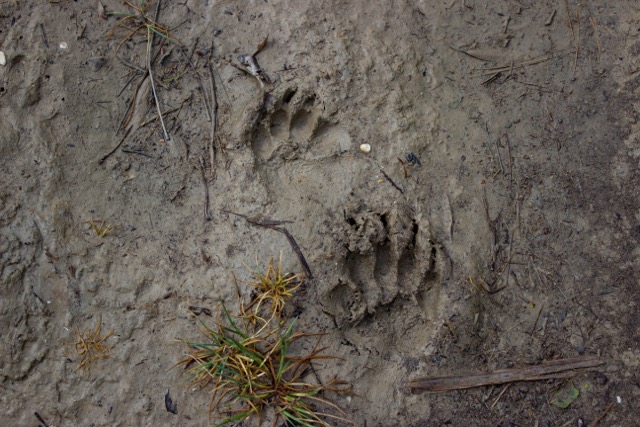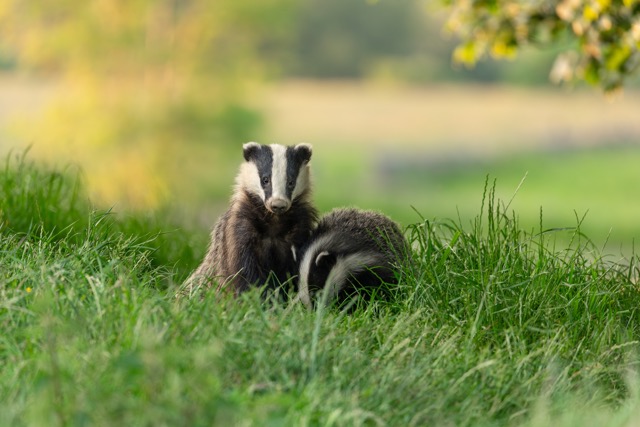
For 2024, our calendar features watercolour illustrations of UK wildlife by Alexia Claire. To go alongside this, we'd like to tell you more about the plants and animals we chose to feature each month. For August 2024 our species of the month is the European Badger (Meles meles).
How to identify a Badger
European badgers are a medium-sized mammal with a robust, sturdy build, typically measuring between 60 to 90cm. They are covered with coarse, grey fur and sport very distinctive black and white stripes on the face, with two prominent black stripes running from the ears, over the eyes to the nose. They have short, powerful legs and long, curved claws adapted for digging.
Badgers are nocturnal, so during the day its easiest to determine their presence by tracks and signs left over from their night time activities. Firstly, finding badger footprints is a good way of finding where they are communing or foraging. Their prints are broad with five toes and long claw marks on the front feet.
Other ways to identify badger activity includes the presence of their underground setts with D-shaped entrances and distinctive latrines which are used by the family to mark their territory.

Where are Badgers found?
European Badgers are widespread across most of continental Europe, the UK and Ireland, from the Iberian Peninsula to western Russia and the Causcaus. They are very adaptable and can be found in a wide variety of habitats, including grassland, urban areas and hedgerows but they have a preference for deciduous woodland. Large roots from trees are underground features ideal for supporting their setts, and leaf litter offers opportunities for foraging.
What do Badgers eat?
European badgers have a diverse diet that varies with the seasons and the availability of food. They are opportunistic feeders, so will eat whatever is available. They forage for a wide range of insects, including earthworms, beetles, grubs, and caterpillars. They sometimes raid wasp nests or beehives to consume the insects and their larvae, even though this comes with the risk of getting stung. Small animals like young rabbits, rodents and frogs also form part of their diet, and will take advantage of carrion.
As the seasons change, badgers adapt by eating more fruits, and tubers, which are plentiful in the summer and autumn. They enjoy apples, pears, and berries such as blackberries and elderberries. During the autumn, they also consume nuts like acorns and beech nuts, which help them build up fat reserves for the winter.
How can we help protect them?
Badgers are protected under the Protection of Badgers Act (1992), the Wildlife and Countryside Act (1981) and the Hunting Act (2004). However, badger conservation has become a topic of debate over the last 15 years since, research into Bovine tuberculosis (bTB) pointed towards badgers as a reservoir for the disease and a source of transmission. In order to curtail the spread of bTB, the UK government introduced a badger cull in 2013 in Gloucestershire, which was rolled out into most of the south west and midlands counties.
The focus for wildlife charities, such as the Badger Trust, is now to provide evidence that vaccination of cattle, improved biosecurity and hygiene on farms are more effective solutions for bTB.
Outside of the debate, we can help protect badgers through ensuring that woodlands, hedgerows, and other natural habitats where badgers live are preserved and, if you live in an area where badgers are present, consider creating a garden that is welcoming to them by planting native shrubs, avoid using chemicals, and provide access to fresh water.
Badgers have always suffered from persecution, so if you encounter evidence of illegal badger persecution, such as baiting, sett destruction, or poisoning, be sure to report it to local wildlife authorities for investigation.



